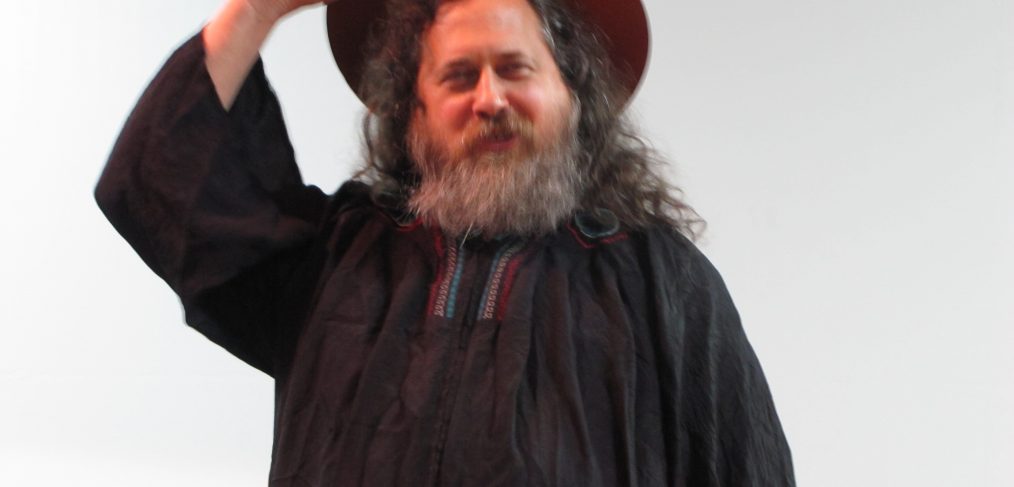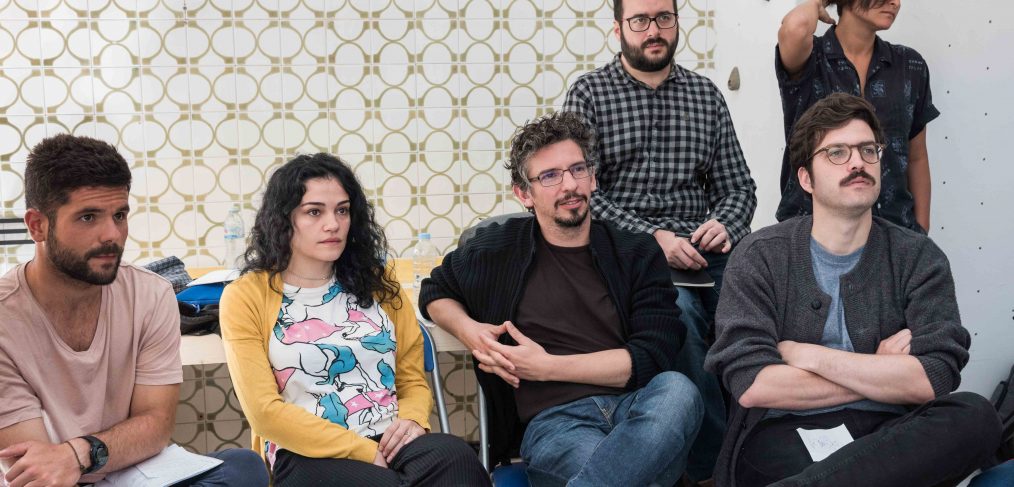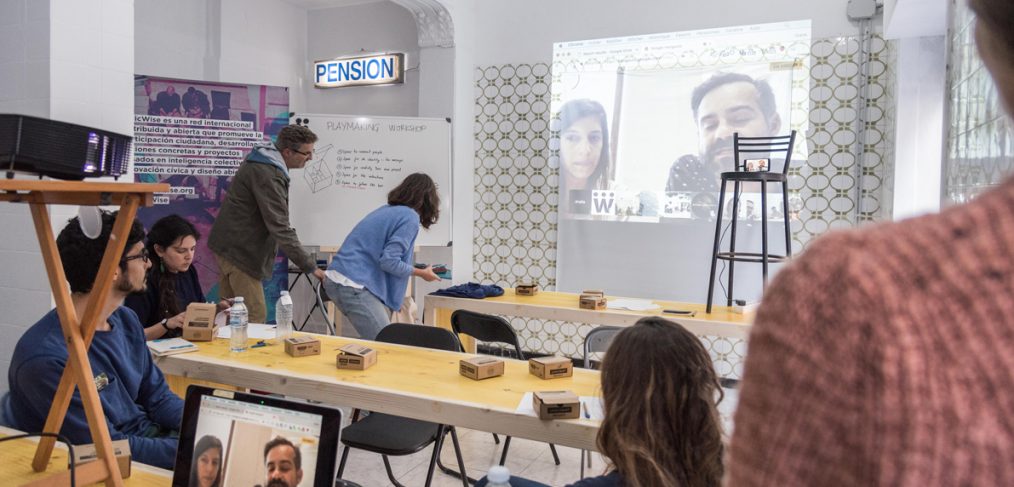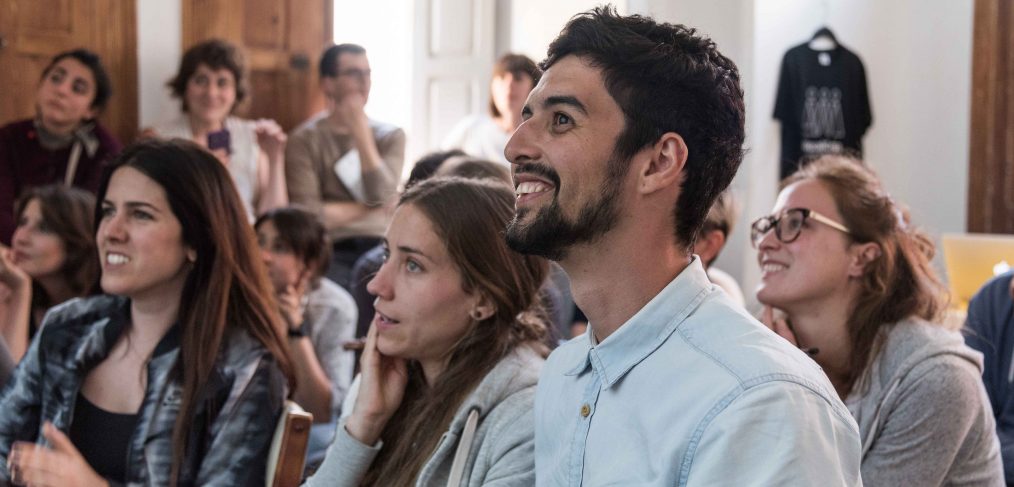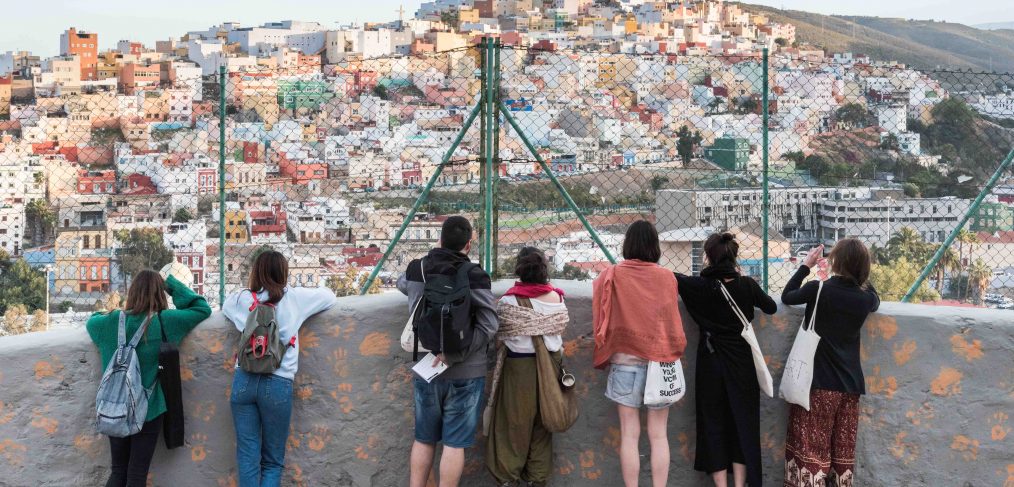Glocal Camp, Civic Innovation School and Project Governance are the working groups of today. At the same time, Pascual Pérez and Alfonso Sánchez Uzabal are in charge of the workshop on CivicTech held in Atlas. It is Alfonso, programmer, architect and member of the Montera34 collective who answers these questions:
The Canary Islands received last year some 17 million tourists. “This is a perfect laboratory for building alternative projects to mass tourism,” says Manuel. “Ecotourism is a very small minority, but now some very interesting ideas are beginning to develop on the island,” explains Shanti. One of these emerging projects is the Atlas (Alternative Travel Local Association).
We interviewed Adolfo Chautón, urban geographer, social innovation facilitator and CivicWise researcher on civic economy. Start with a definition:
Internal working day. In the morning, the workshops of the week were planned and three of them were started: Gobernace, CivictechLab and CommoningLab.
In the afternoon, the Atlas coworking room – the association of Anzofé Street, in the heart of La Isleta, which hosts this year’s Glocal Camp 2018 – was the place where the connection via hangout with other nodes of the network took place. “We have to achieve a presence through digital,” reflected Mario, from Alicante.
The Glocal Camp 2018 starts to be counter-programmed in an irremediable way. Today in the morning two meetings are being held simultaneously: BarriosLAB and HabitatLAB. The first focuses on the pooling of local projects and initiatives that work on activating the territories at the neighborhood level. Among them, Mestura Puerto (Fasebase), Islario (Panic Studio), both local projects of CivicWise in Canarias; Activa Orriols, Sembra Orriols, Factoría Cívica and Xarxa Oberta (Carpe) from Valencia, and Ovestlab from Modena.
“From the peninsula you have another image of the islands: you don’t know or value the natural and architectural heritage that we have,” says María. She is from the technical team of participation from a neighborhood in the south of Gran Canaria. Her husband is a teacher and works up north. “Every morning we both leave the house dressed as if we were going to work in different countries,” he jokes. An example of the island’s contrasts.
The scales of the fish gave off a silvery colour with the reflection of the sun. When fishermen spread their catch on the beach, the neighborhood glowed. From there it takes its name: La Hoya de la Plata, one of the most picturesque fishing districts of the island of Gran Canaria. Its streets are called Estrella de Mar, Cangrejo, Boquerón or Salmón, and some of its neighbors still remember that a tidal wave hit the coastal houses back in 1953. Since then, years and years of democracy passed and successive government came and went. But walls that are falling off and unfulfilled promises about policies for the restoration and recovery of the neighborhood remained. On the first day of this edition of the Glocal Camp Canarias 2018 we got to know about the peripheries.

